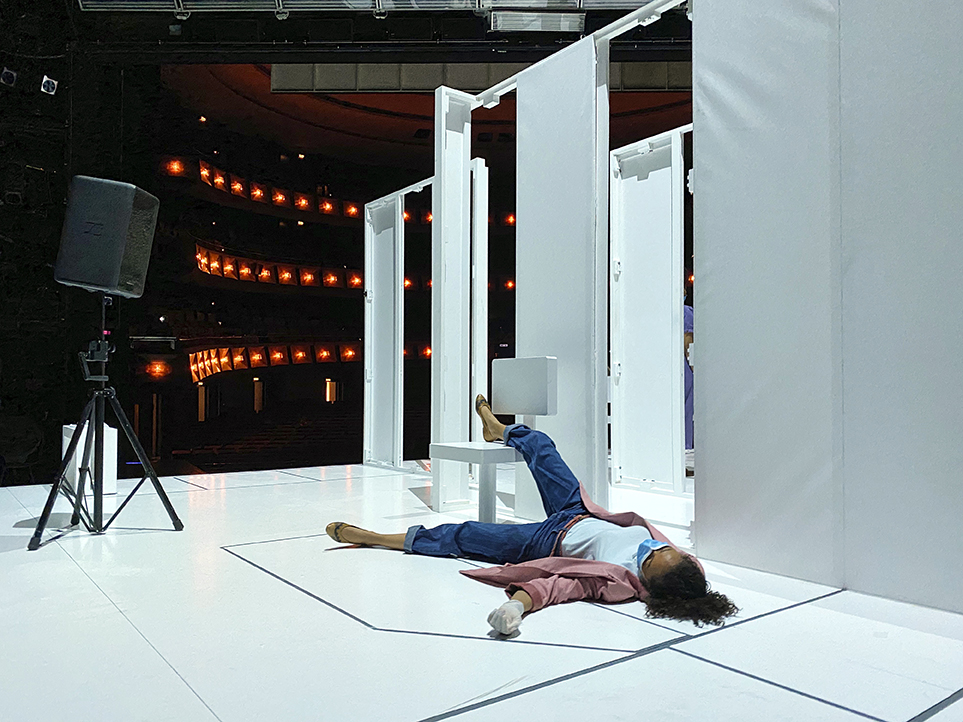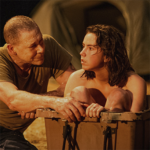 Jens Hoffmann explains how he incorporates his education as a theatre director into his curatorial efforts and the over-intellectualism of art.
Jens Hoffmann explains how he incorporates his education as a theatre director into his curatorial efforts and the over-intellectualism of art.
200%: You trained as a theatre director and studied stage directing, dramaturgy, and cultural sociology at the Ernst Busch School for Performing Arts in Berlin. You have brought this experience into your curatorial efforts. Was this inevitable?
Jens Hoffmann: For me it felt quite logical. I was trained in a very traditional school, the Ernst Bush School in Berlin, which was very much into the “art” of acting and more classic notions of drama and theatre. I personally was always very much interested in avant-garde theatre, such as Jan Fabre, Jan Lauwers, and Anne Teresa de Keersmaekers – people who operated in between dance and theatre and mostly came out of Belgium. I also loved avant-garde theatre makers and choreographers from the U.S. such as the Wooster Group, Richard Foreman, Trisha Brown, Yvonne Rainer, and Robert Wilson, most of which was not know at my school in Berlin. But the Ernst Busch school gave me the chance to study Brecht in depth which had a big influence on how I think about exhibition making.
At the beginning of my career, in 1997, I worked with Tom Stromberg on the theatre program for Documenta X. I worked in the same office as the head curator of this Documenta, Catherine David, who gave me an introduction to the visual art world. I knew the basics about art but the experience of Documenta 10 generated a lot of new ideas about the relationship of directing and curating.
200%: You mean a choreographed dramatic presentation of art?
JH: Yes, there is a certain dramaturgy to it. I begin with a certain introduction and then carefully put together what piece comes after the next, how the pieces interrelate, how to create a dramatic flow so that visitors are not constantly bombarded by visuals, but rather have moments of silence interspersed with action. The moments of contemplation are really carefully outlined. I would say this probably accounts for 60 percent of the work I do as a curator – this careful placement of the objects and attention to the pacing, or flow, of an exhibition.
 200%: So that the exhibition can breathe?
200%: So that the exhibition can breathe?
JH: Yes. It is a dramatic and dynamic situation.
200%: Can you cite an example of an exhibition you curated that represents this theatrical approach?
JH: At the Wattis Institute we had a trilogy of exhibitions in which each one took as its subject an iconic American novel. It was an investigation of American history and identity through the lens of classic works of literature. First there was ‘The Wizard of Oz’, followed by ‘Moby Dick’, then ‘Huckleberry Finn‘. Each of these books is about travelling, the exploration of the outside world, and also the exploration of oneself. You have Dorothy on the yellow brick road, Ishmael on the Pacific Ocean, and Huckleberry Finn on the Mississippi River. Over the course of their journeys, they become other people. They learn, they gain wisdom as their worldviews expand. That’s very much how I see an exhibition functioning, ideally. It should stimulate your thinking, and you should leave the show somehow more mature. It is educating you and taking you to unexpected places. I enjoyed exploring the relationships and parallels among the books’ histories, the eras in which they were published, the people who wrote them, and our time today. Many things that happen in these books and the issues the characters face, are absolutely pertinent to how we understand and experience America today.
200%: Do you experience a tendency these days to over-intellectualize the process of creating art and can this over-intellectualization sometimes be at the expense of passion and a genuine emotional input in the creative process?
JH: I would not say that there in an over-intellectualization when it comes to the creation of art. If there is an over-intellectualization than this can be found mostly when it comes to the interpretation of a work of art or even so an over intellectualization when comes to speak about the context in which a work is created and what impact has on the artist and the making of a work.
200%: Is there also a tendency of curators to over-intellectualize art?
JH: Again, I think it is less the art works but the concepts that are being created by curators that can be overly intellectual and within which the artworks are then presented in without much connection. It is hard to apply high theory to exhibition making, they can be connected but they are different things. As a result a more theoretical exhibition will also always have an emphasis on the publication bringing in essays that further elaborate the thesis and often also a program of talks. In this case the exhibition becomes only one element of a larger argument that is also made via books, talks, conferences and there moves from its primary place as vehicle of artistic articulation to a spot just among other elements.
 200%: Is the element of intellectualism of which the public at large are suspicious and makes them disengage?
200%: Is the element of intellectualism of which the public at large are suspicious and makes them disengage?
JH: We need, without a doubt, be conscious about the world we live in and acquire as much knowledge as we can in order to understand the mechanism that drives society today. We need to use that knowledge to examine and explore how our civilization is functioning. However, when we engage with a wider audience and the public we can not expect them to understand high theory and complex philosophical questions as if they are reading the news paper. A lot of work also has to go into being able to engage the audience with theses discourses that are necessary to understand our histories and current realities so we do not alienate the visitors that come to our programs and exhibitions. That is in itself a question of art.
Interview written and conducted by Thierry Somers. Pictures from the Wattis Institute exhibitions that are based on American novels: Huckleberry Finn (2010) and The Wizard of Oz (2008).










